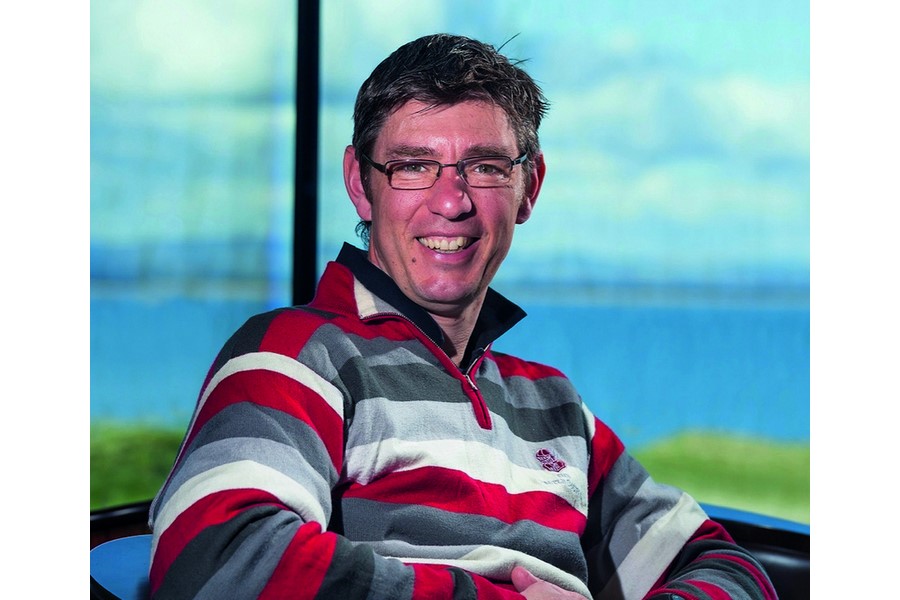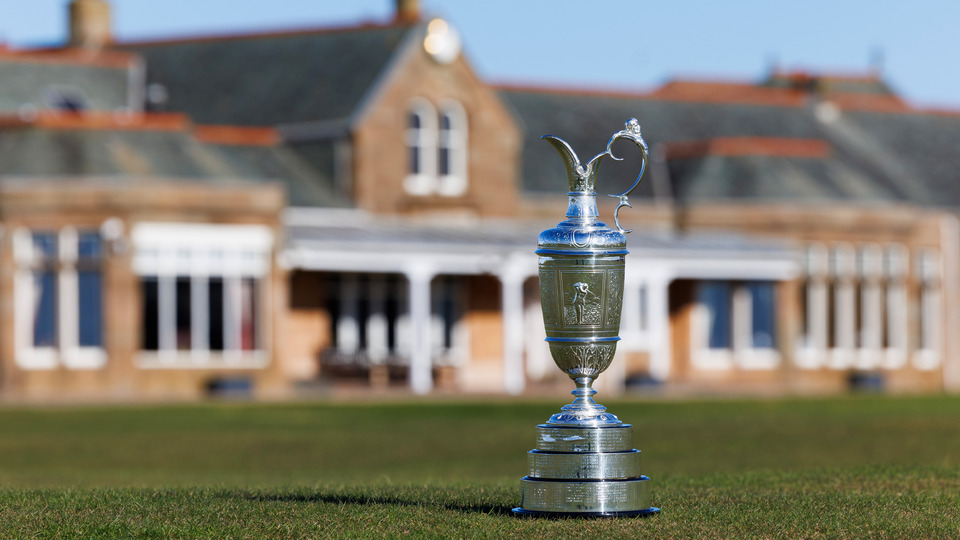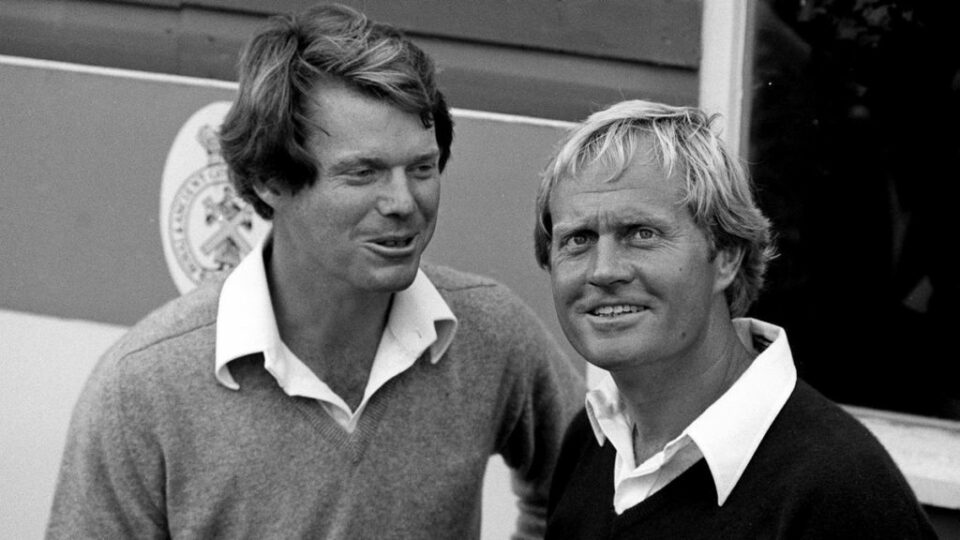Part 1

Estimated reading time: 10 minutes
Can a links course ever get "too fast" whereby skill is replaced by luck?
Ebert: Off the tee only if the fairways are too narrow as they have been in the past at Royal St. George’s but they are wider where necessary now. Only on the greens if high winds cause issues but The R&A is always very careful not to get the greens too fast as a result.
Stephens: Luck is part of the game whatever the conditions. The Open is about adapting to the conditions presented in front of you – a combination of the course ground conditions and weather. It can change very easily in a few hours. Sometimes luck can be where you are drawn in terms of the tee times. I love firm and fast conditions as it allows you to experiment with different types of shots and if you get that shot right you have pulled it off. So, the answer to your question is no – the skill is to adapt to the conditions in front of you and luck is luck.
Kimber: There is always an element of luck in golf and perhaps particularly in links golf however the skills required for links golf isn’t just down to ball striking, it is also reading the combination of ground and weather conditions, selecting and executing the most appropriate shot.
Mackenzie: Of course, it can, but in truly extreme conditions the golfer who is the most mentally strong in adversity usually succeeds. Phil Mickelson’s win at Muirfield was a masterclass of links golf and that mental strength.
Gaunt: The wind has the final say on this, especially where the greens are raised and exposed, like at St Andrews. I’m happy for the professionals to play in challenging conditions, but the course superintendent and the R&A need to be ahead of the game to ensure that conditions don’t get so quirky that balls blow off the putting surfaces. Luck has a part to play and makes the tournament all the more interesting. You can’t design it (luck) in and you can’t design it out!
Pizá: Long, fast, rolling terrain is what complements a perfect links course. You can call it luck, I call it mystère. One never knows where a beautiful or badly struck ball ends up on links courses. It is enigmatic. A links course requires skill, luck, and ingenuity.
What an amphitheatre this is 🙌
— The Open (@TheOpen) July 12, 2021
The stunning 18th Green at Royal St George's ⛳️ pic.twitter.com/H8ieoY9AyS
If you had one course to recommend for a future Open Championship, not presently on the rota, which one, would you suggest be used?
Kimber: Prestwick or Machrihanish but sadly both are just too short for an Open. So, I’ll go with Saunton / East as a great test of golf.
Pizá: I would propose a special commemorative Open edition at Old Prestwick golf club played on 12 holes using the rest of the course to accommodate infrastructure a modern venue requires. This special event could promote 12-hole circuits around the world and help grow the game we love.
Mackenzie: I’ll leave that to the R&A because The Open roadshow is so huge the course is only a part of the selection process.
Ebert: Askernish in the Outer Hebrides!
Stephens: My family is Welsh – it would be lovely to see an Open being held in Wales sometime in my lifetime. As a golf course designer one fantasy is to use more land on the back nine at Pyle and Kenfig and convert it into a 18-hole modern championship course worthy of hosting the Open. The land is similar to Royal St Georges there is loads of space, however, environmental restrictions likely makes it not feasible.
There are some great links courses in Wales that I could go on about like Royal St David’s and Pennard, the most realistic one would be Royal Porthcawl however my view is that the course would need a few tweaks and changes similar to Royal Portrush – possibly two new long holes to bring it up to Open standard as it is still relatively short. The par 4 2nd and 3rd holes by the beach are outstanding.
Gaunt: Royal Porthcawl.
The R&A is responsible for how The Open Championship is conducted. If you had one piece of advice to share with them, what would it be?
Ebert: The R&A runs events so well and I am in no position to advise on how The Open Championship should be conducted any better than it is.
Gaunt: Make more of the ecological benefits the Open championship venues have on the environment – many are SSSI’s – the complainers and opponents of golf don’t realize this. Get the R&A to explain how much fertilizer and water is used on a field of wheat, compared with a golf course on poor quality, free-draining soils. Don’t just focus on the playing surfaces – show what’s growing and living in the roughs.
Mackenzie: Reduce the number of clubs to nine and only allow two clubs with a loft of more than 50 degrees. That would encourage more shotmaking and make the TV coverage more interesting.
Stephens: That’s a difficult question as my first Open was Carnoustie in 1999 and my last one was Birkdale in 2018 the changes they have made in terms of accommodating spectators is astonishing – it is so well organized now. They do listen and strive to improve every Open that they host. The courses they select and the set up I have no problem with them they have experts dealing with this and putting certain clubs under pressure to allow female members in their club so that they don’t lose out to being a future host course of the Open.
The Open is a huge money spinner for the R&A and they do put it back into the game even at grass roots level that not many know of this. From a personal perspective as I am profoundly deaf. One thing they could improve is to have any on course announcements made to be captioned for deaf people. 1 in 10 of people in the UK have a form of hearing loss.
Pizá: Sustainability. Natural. Brown is still good.
Kimber: R&A have plenty of experience in running The Open but I’d like to see them set up the 5th as driveable and use the pin position close to the back right on 15th on Sunday, I’ve always found it devilish.
What drama will we see here on Sunday afternoon? 🏆 #TheOpen pic.twitter.com/6W9CwS8of3
— The Open (@TheOpen) July 13, 2021
The player hoisting the Claret Jug when the competition concludes is who?
Gaunt: It has to be John Rahm.
Stephens: Royal St George's has thrown up some unexpected winners and winners who were the best golfer in that particular year. If Rory (McIlroy) was on fire and played aggressive I would pick him. Would love to see (Lee) Westwood win especially with the championship in England as well as (Paul) Casey, (Justin) Rose or (Tommy) Fleetwood.
However, from my head I would go with Cameron Smith who has performed well in recent majors and it would be great to see another first-time winner.
Ebert: Jon Rahm. His win at Torrey Pines came at the perfect time in his career. Not too early but early enough. We could be seeing the emergence of one of the dominant major championship golfers of all time and his confidence will be sky high for The Open.
Pizá: Louis Oosthuizen would make the best story. Rory McIlroy the second-best story Jon Rahm is still a cool story
Kimber: The champion golfer of the year will be someone with a lot of patience, the old Jon Rahm probably not -- but his display at Torrey Pines must make him one of the favorites. Personally, I’m going to go with someone who has played links courses very well -- Tommy Fleetwood.
Mackenzie: Lee Westwood. His pal Darren Clarke won against the odds at St George’s. Lee has had an excellent year and he most certainly deserves a major. I’m not betting the house on it though.
***
The Participants
Agustin Pizá

Earned a Bachelor of Architecture degree from ITESM and a Master’s Degree in Golf Course Architecture from Edinburgh University in Scotland. He is a proud member of both the European Institute and the American Society of Golf Course Architects. Pizá was recognized by Forbes Magazine as one of the top 100 creative minds from Mexico and Golf Inc. Magazine included him in their Power 2020 issue as an up-and-coming superstar.
Ben Stephens

Age 44, active in golf course design for over 20 years -- most prominent work -- Rutland Water Golf Club / Normanton Course, 18-holes original design.
Tom Mackenzie

Started in golf course architecture in 1989 with Donald Steel and formed Mackenzie & Ebert with Martin in 2005. He has worked on many of the great old courses across Britain and beyond, including the major reworking in recent years of Trevose, Western Gailes and Nairn as well as the new 7th hole at Royal Dornoch.
Paul Kimber

50-years old, golfer for 37 years and active in golf design for 21 years. Worked on several high-profile projects while with David Kidd, including Nanea in Hawaii, Castle Course in St Andrews, and Machrihanish Dunes in Kintyre. Since working with business partner Niall Glen, has worked on projects in the Far East, Europe and a wide variety of projects at home in Scotland, most recently at Dumbarnie and Ladybank. Client list includes both St. Andrews Links Trust and the R&A.
Martin Ebert

54-years-old and has worked in the golf course design business for 31 years. Advised seven of the ten Open venues including Royal St. George’s, the design work for the changes to the Ailsa Course at Turnberry before the Open of 2009 and the more recent redesign to the course and the changes, including two new holes, at Royal Portrush for The Open in 2019. Also recently worked on existing course projects in many parts of the world including the UK, Ireland, Canada, Spain, Peru, Chile, Argentina and Japan.
Jonathan Gaunt

Born in 1964, qualified as a Landscape Architect in 1987 and began working as a Golf Construction Site Manager on various courses where Donald Steel was the architect. In 1989, designed his first golf course and since establishing his own architectural practice in 1990 he has designed and supervised the construction of over 40 new golf courses. A Senior Member of the European Institute of Golf Course Architects since 1997. Current work includes new projects in Cyprus and the UK and numerous historic course remodelling projects.



